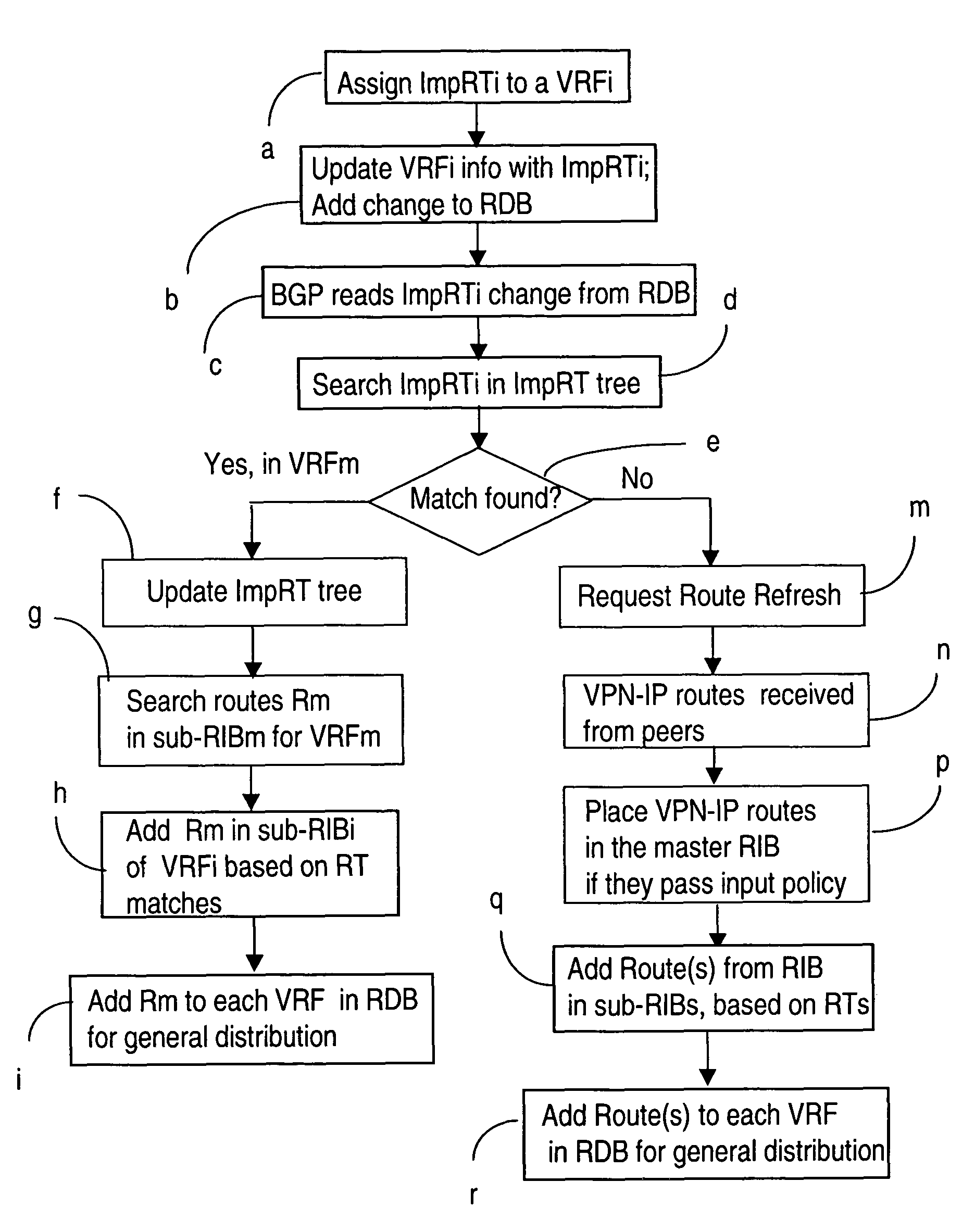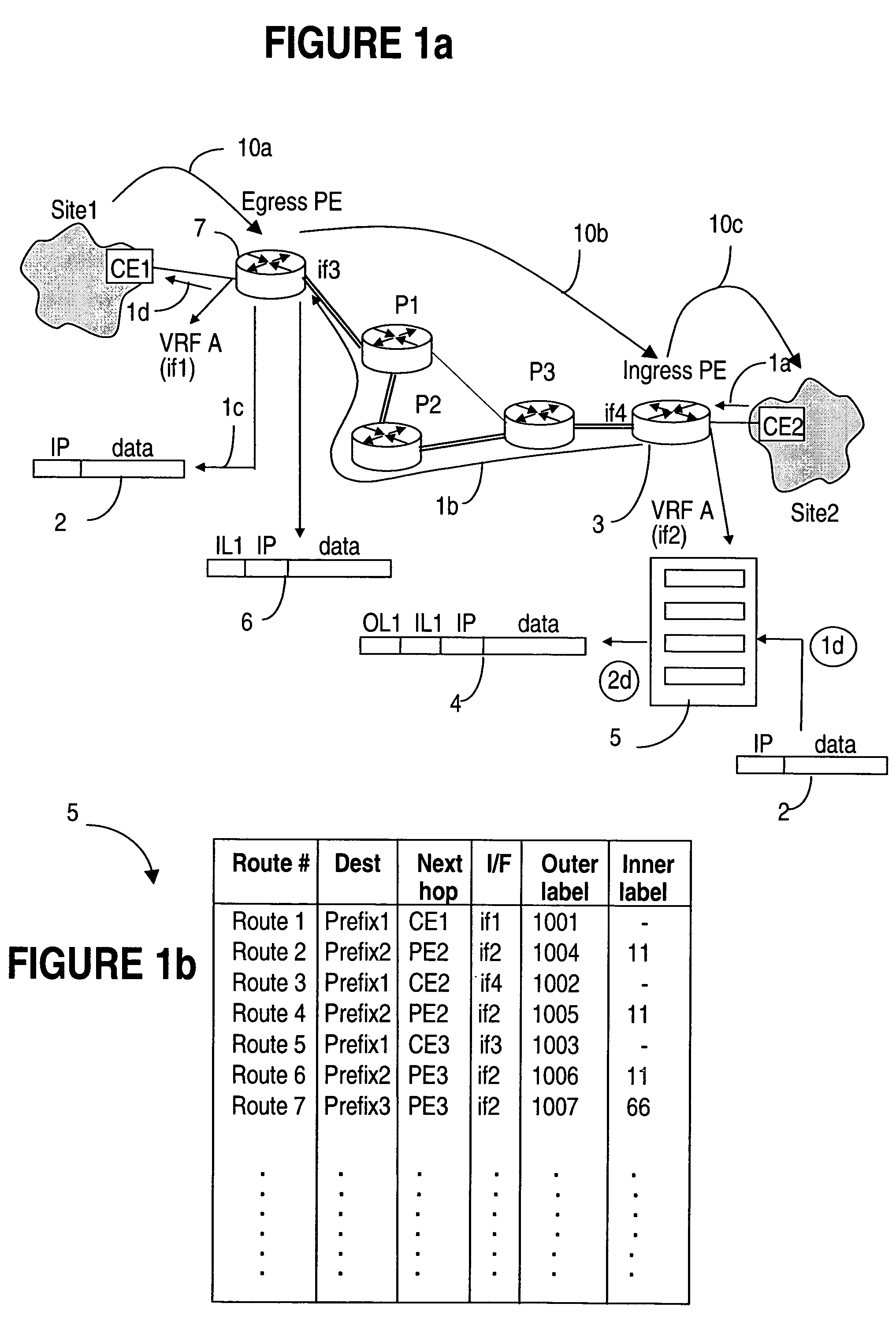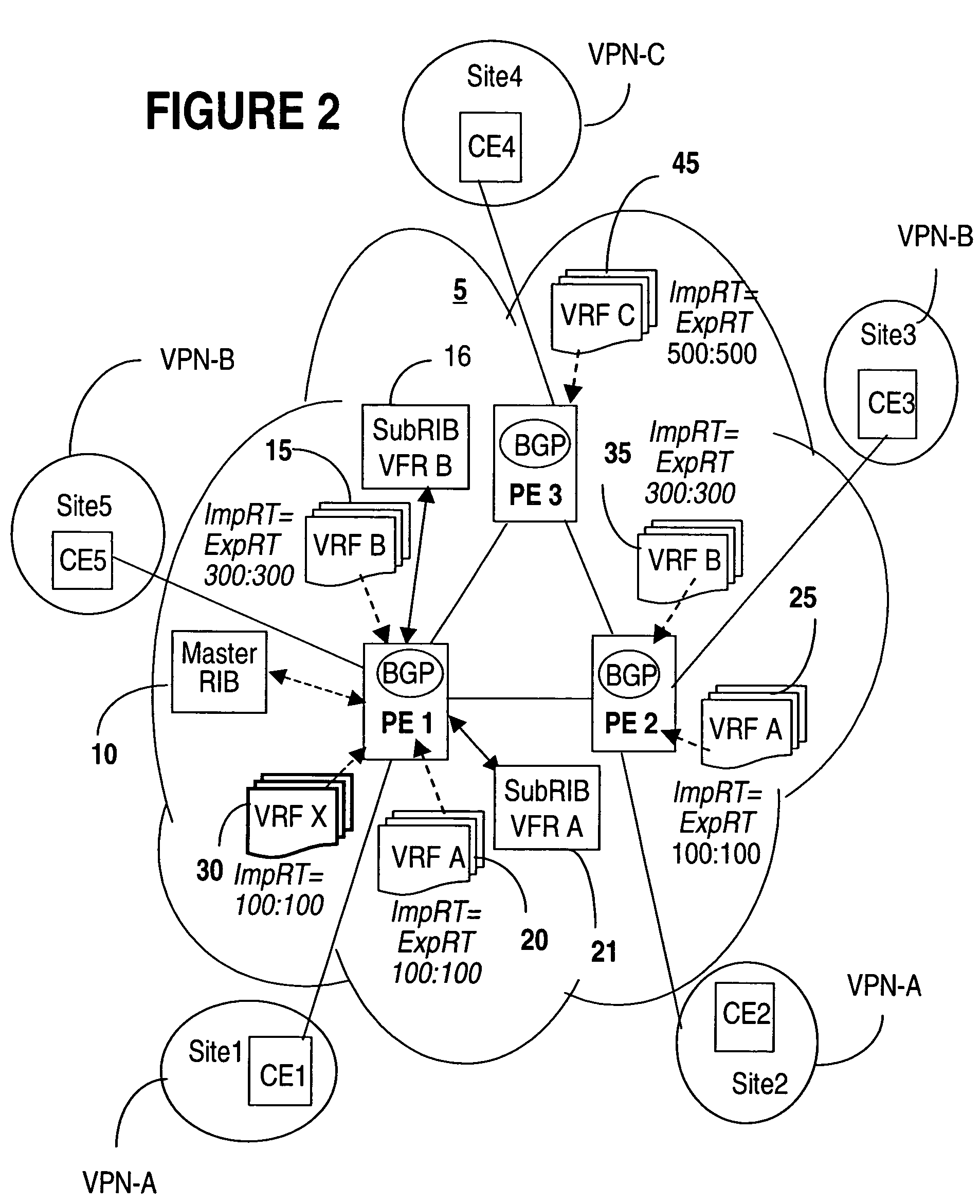Managing L3 VPN virtual routing tables
a virtual routing and routing table technology, applied in the field of virtual private networks, can solve problems such as performance problems, and achieve the effect of efficient setup and maintenance of a virtual private network, more bandwidth and processing efficiency
- Summary
- Abstract
- Description
- Claims
- Application Information
AI Technical Summary
Benefits of technology
Problems solved by technology
Method used
Image
Examples
Embodiment Construction
[0022]A short review of the operation of a VPN is provided, defining the terms used in the description of the present invention. VPNs ensure segregation of user domain IP address space using route distinguishers (RD), and constrain distribution of routing information at a provider edge (PE) router using forwarding tables VRF. User domain segregation is performed at the ingress PE router, while filtering of the routing information is performed by the egress PE router.
[0023]Each customer site within a VPN is assigned a unique route distinguisher, which identifies the PE interface linked to that site. The PE adds the site RD to the IP address of the routes advertised by each CE node within the customer site to create an extended address known as a VPN-IP address. This VPN-IP address uniquely identifies each endpoint in the VPN, even if the customer site is using unregistered private IP addresses. In the service provider's network, the routes for a VPN are identified based on the RD.
[00...
PUM
 Login to View More
Login to View More Abstract
Description
Claims
Application Information
 Login to View More
Login to View More - R&D
- Intellectual Property
- Life Sciences
- Materials
- Tech Scout
- Unparalleled Data Quality
- Higher Quality Content
- 60% Fewer Hallucinations
Browse by: Latest US Patents, China's latest patents, Technical Efficacy Thesaurus, Application Domain, Technology Topic, Popular Technical Reports.
© 2025 PatSnap. All rights reserved.Legal|Privacy policy|Modern Slavery Act Transparency Statement|Sitemap|About US| Contact US: help@patsnap.com



